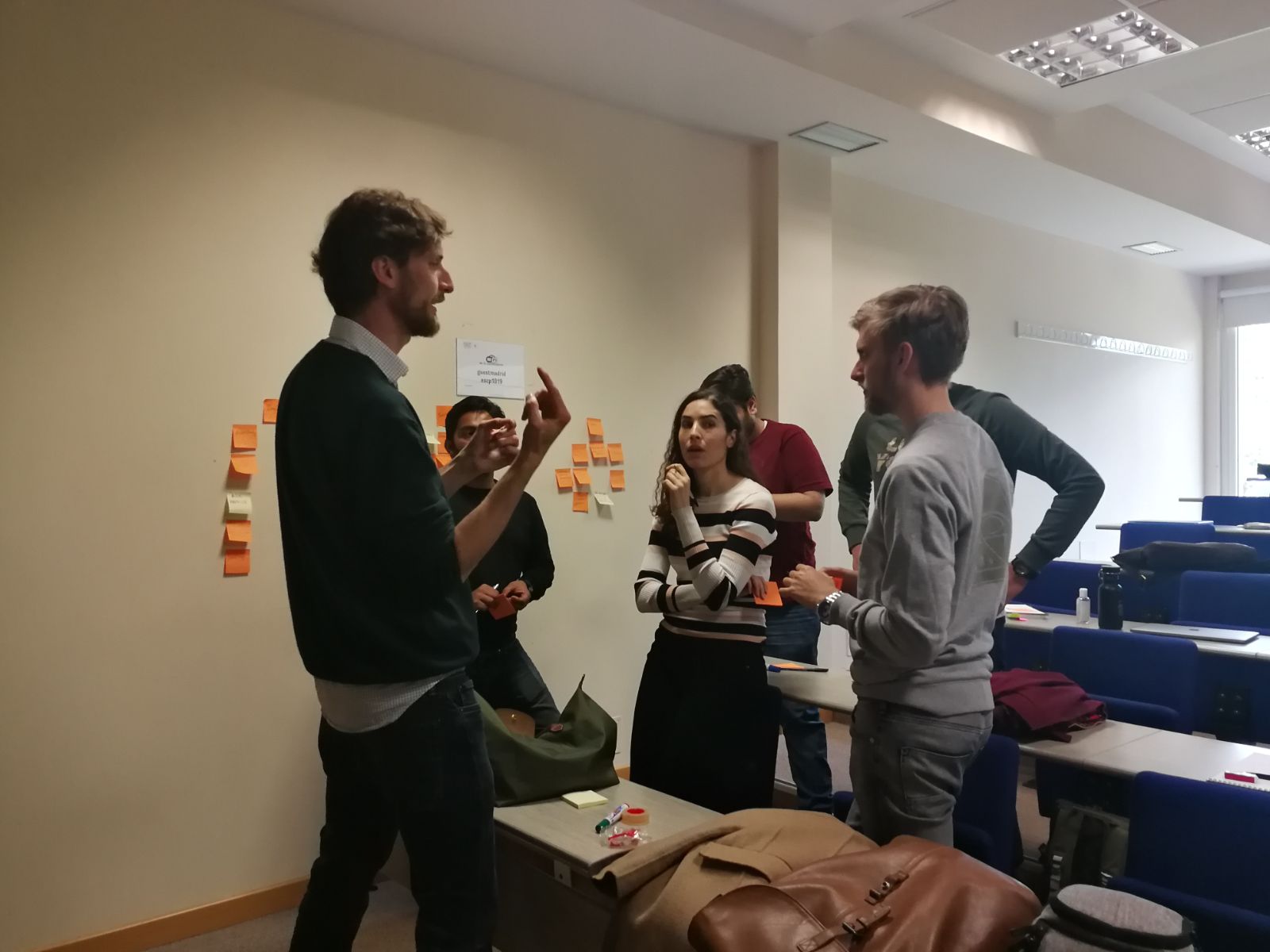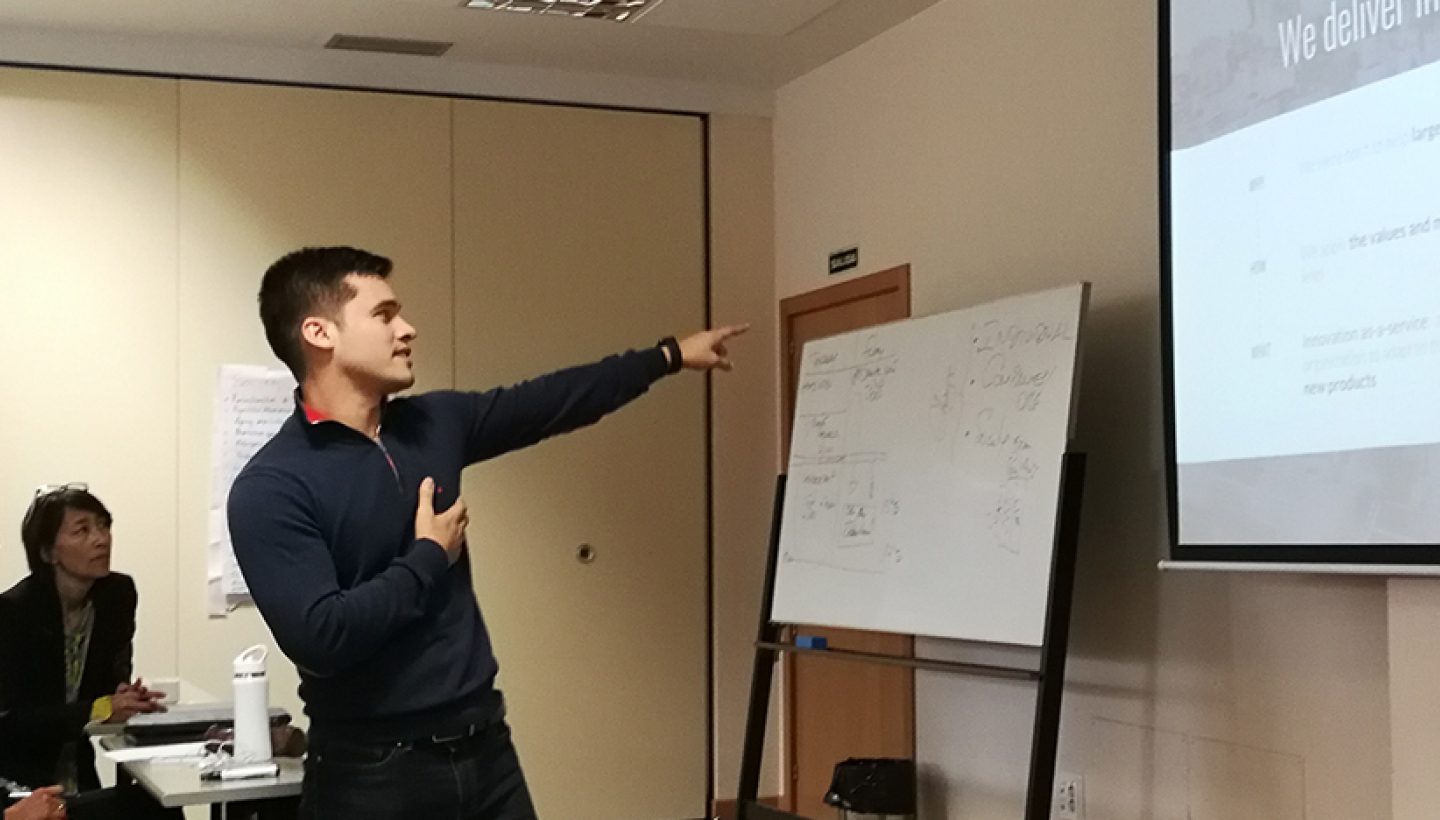Opinno was on campus at the ESCP Business School in Madrid this week to organize an event for 25 MBA students. ESCP is one of the oldest and most prestigious business schools in the world. With its two urban campuses in Paris and one in Berlin, London, Madrid, Turin, and Warsaw, it offers its students a unique style of cross-cultural education as well as an informed global perspective on international management issues. The mission of this French educational establishment is to develop the next generation of transnational business leaders. It offers the chance to study on campus at each of its intuitions across Europe.
The event was attended by 25 students currently on the MBA Program; they are undertaking a course in Organizational Development and Leadership, led by the lecturer, Veronique Tran. Alejandro Briceño, Opinno’s head of Employee Experience, was there to deliver the session in Design Thinking to students.
This approach is a creative methodology which involves the minds of all its participants in clearly-defined stages, such as the brainstorming stage or the empathizing stage. It could best be described as open-minded and hands-on; it is especially suited to the creation of solutions in complex situations.

The challenge proposed to students was the following: How to create appropriate organizations for all generations?
Ahead of this, Alejandro had given the same group a talk on the influence of the Baby Boomer Generation on the economies of industrialized countries – a driving force behind consumerism for the past 50 years. It is now a generation reaching retirement age and slowing down.
Informed about the most important socio-economic tendency of the last half-century, students were ready to work. The workshop in Design Thinking had 3 different stages:
-
Students were first required to explore the challenge closely. They analyzed both the benefits and blockages to creating company organizations across the generation divide and across cultures.
-
The second stage was to create ideas as solutions to the impediments acknowledged in the first stage. This involved a brainstorming process in which participants spontaneously offer ideas and a list is gathered of potentially viable solutions. Brainwriting was used to accompany this phase. Here students were asked to write their own ideas down. They then had to pass their list along to another student, who added a new development to their lists.
-
When all the ideas were placed together and compared, students were asked to prioritize certain actions and justify their choices.
The outcomes were varied: students felt that the integration of team-building activities was essential in any company culture. Furthermore, they suggested the installation of programs designed to mentor employees and offer support, as well as reverse coaching for particularly important decisions or events. Finally, gamification – the application of game-design elements which allow the individual to socialize, learn, master and achieve in new contexts – were also recommended.
The experience allowed students to meditate on ideas about the kinds of cross-cultural institutions of the future they will be involved in building.



